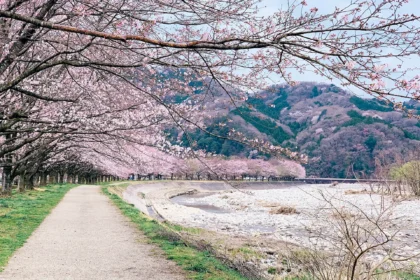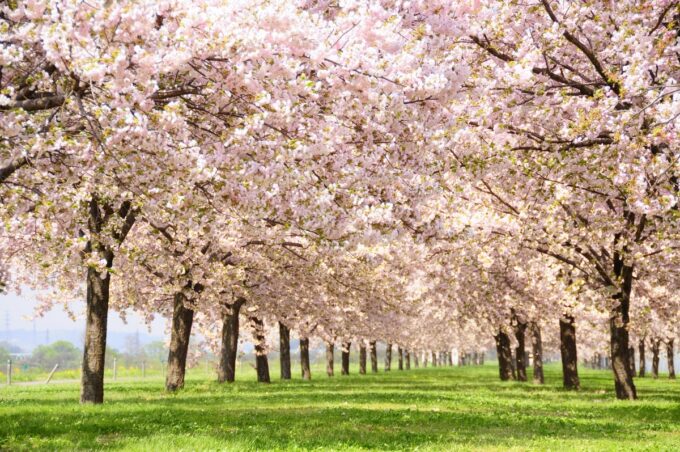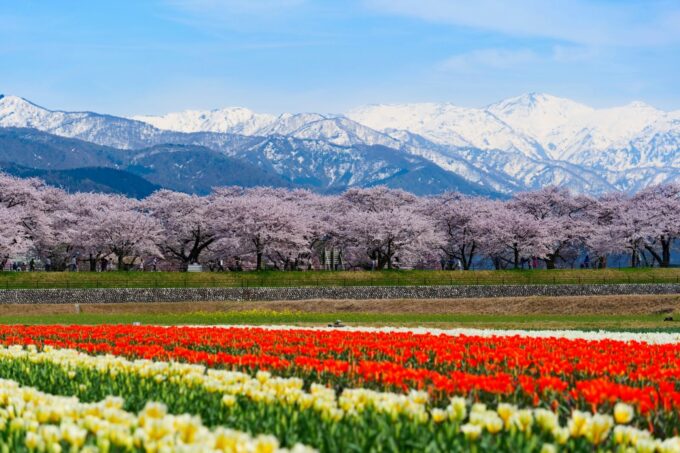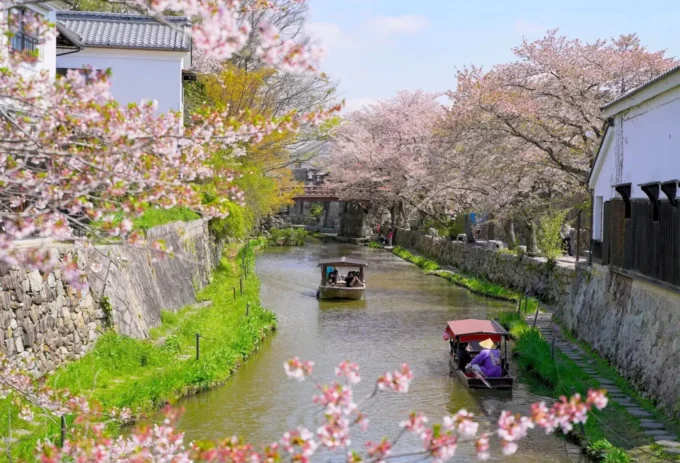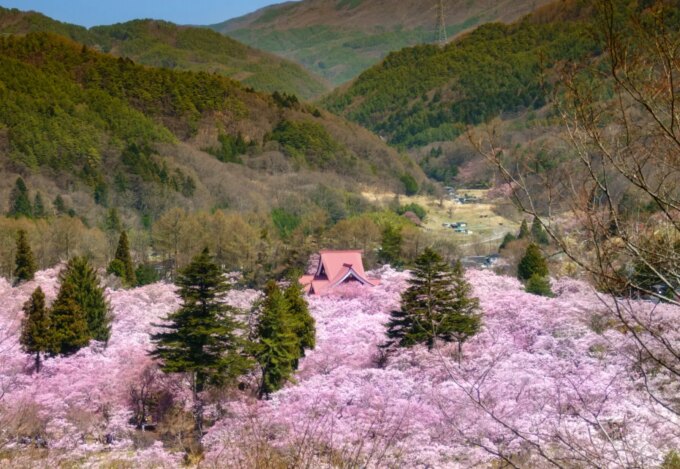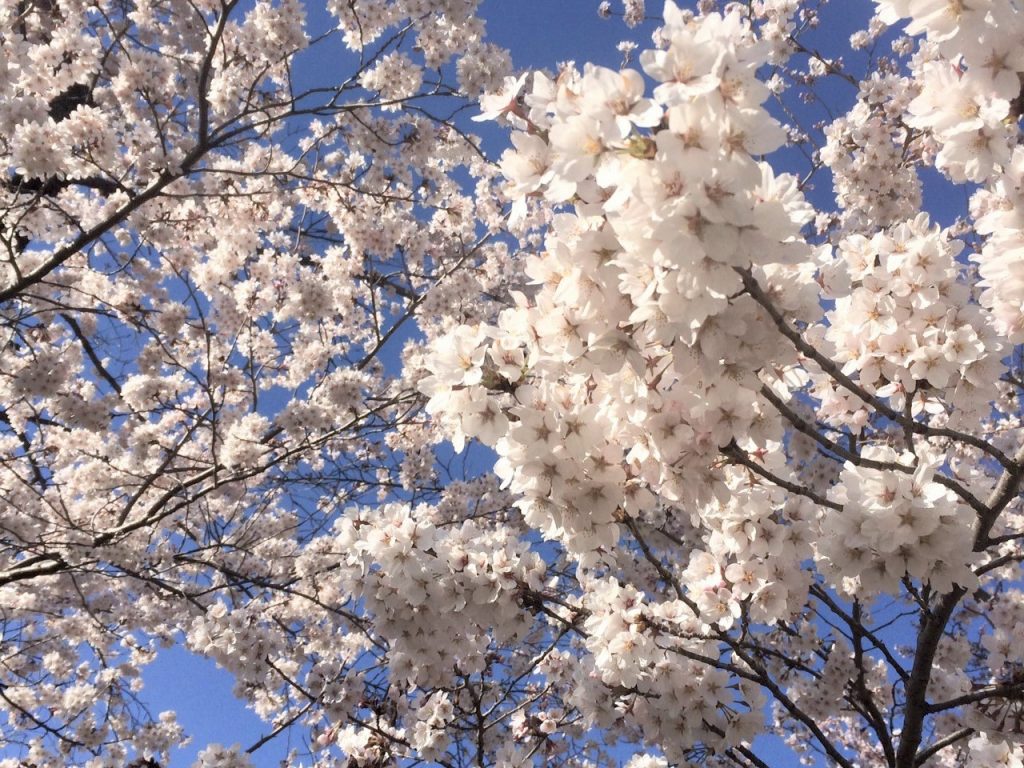
You might be surprised to learn that there are around 20 varieties of cherry tree in Japan, ranging in appearance, size, color and timing of their bloom. As Japan is a rather long country from North to South, the blooming times of each region will also vary regardless of flower variety, allowing a few months in which cherry blossoms will be visible somewhere in Japan if you seek them out.
If you are going to come to Japan in Spring, it would be a waste to not seek out some cherry blossom and take in their unique beauty. Before you make the trip however, take a second below to familiarize yourself with the different varieties so you can enjoy hunting for them out in the wild!
THE VARIETIES OF CHERRY BLOSSOMS
'Somei Yoshino' (Yoshino Cherry Blossom)
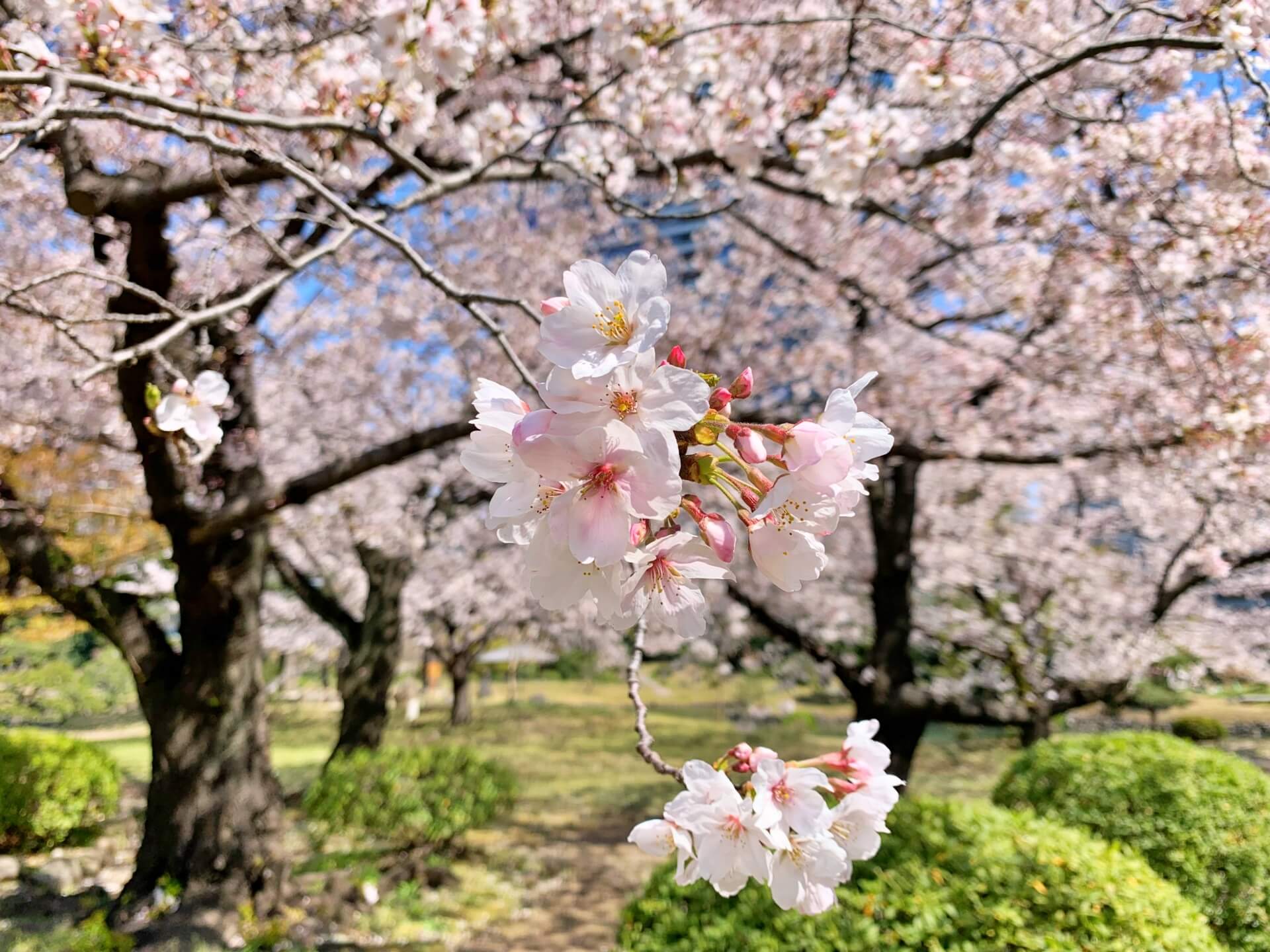
Considered the most classic cherry blossom, the ‘somei yoshino’ variety is the most common tree you’ll encounter in Japan. Cultivated for its beauty during the Edo Period (1603-1868), the somei yoshino is a small flower of five petals with a slightly pink hue. The trees are stunning in full bloom as their leaves do not bud until after the flowers reach their peak, creating the truly beautiful sight of trees heavy with a full white/pink canopy.
'Yamazakura' (Mountain Cherry Blossom)
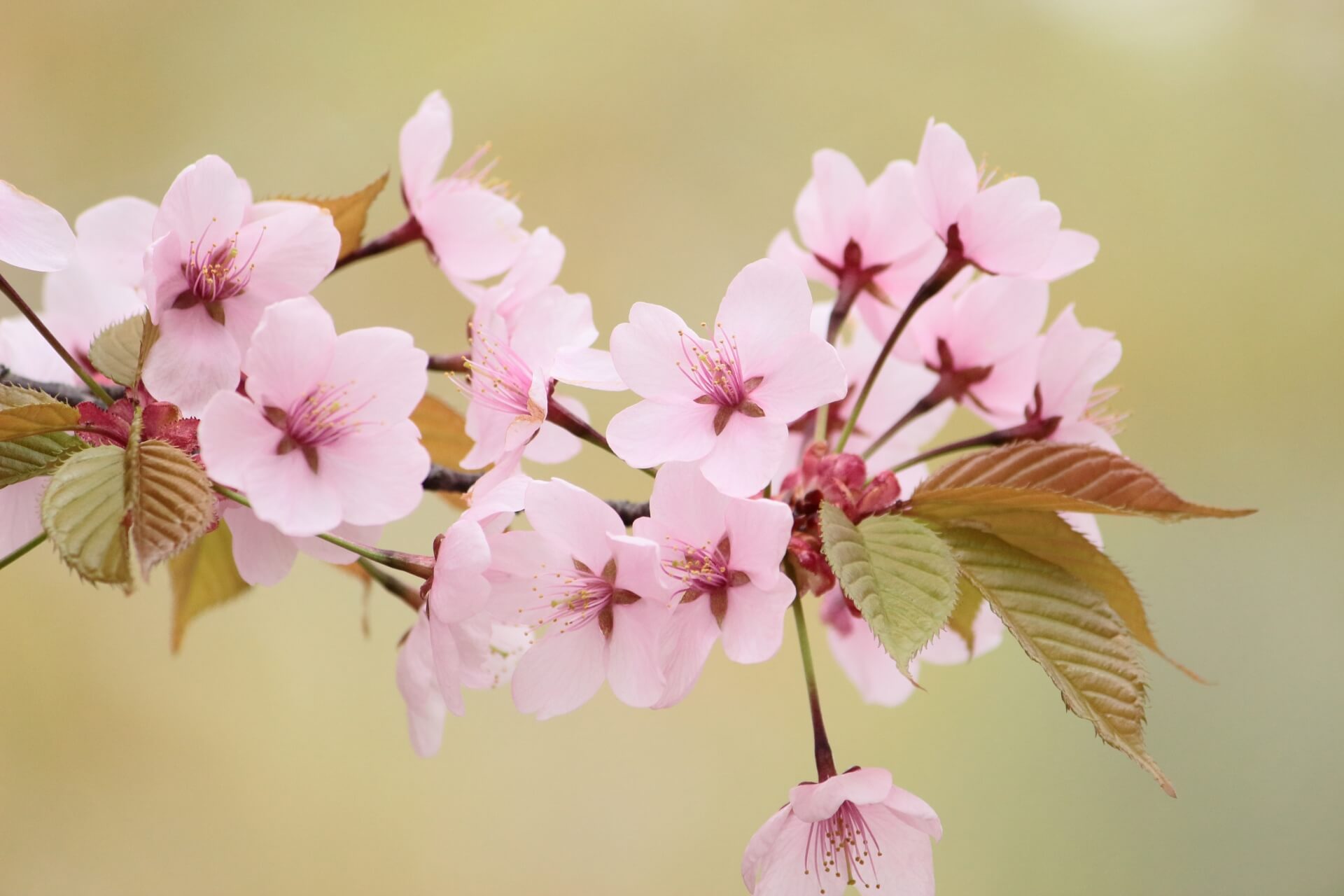
‘Yamazakura’ or ‘Mountain Blossm’ trees also produce fragile white/pink flowers with five petals but unlike somei yoshino blossoms, the yamazakura occurs wild and was not cultivated. While the flowers look quite similar, yamazakura produce leaves at the same time that they flower making the full bloom less intense than somei yoshino trees and easy to distinguish.
'Yaezakura' (Double Cherry Blossom)
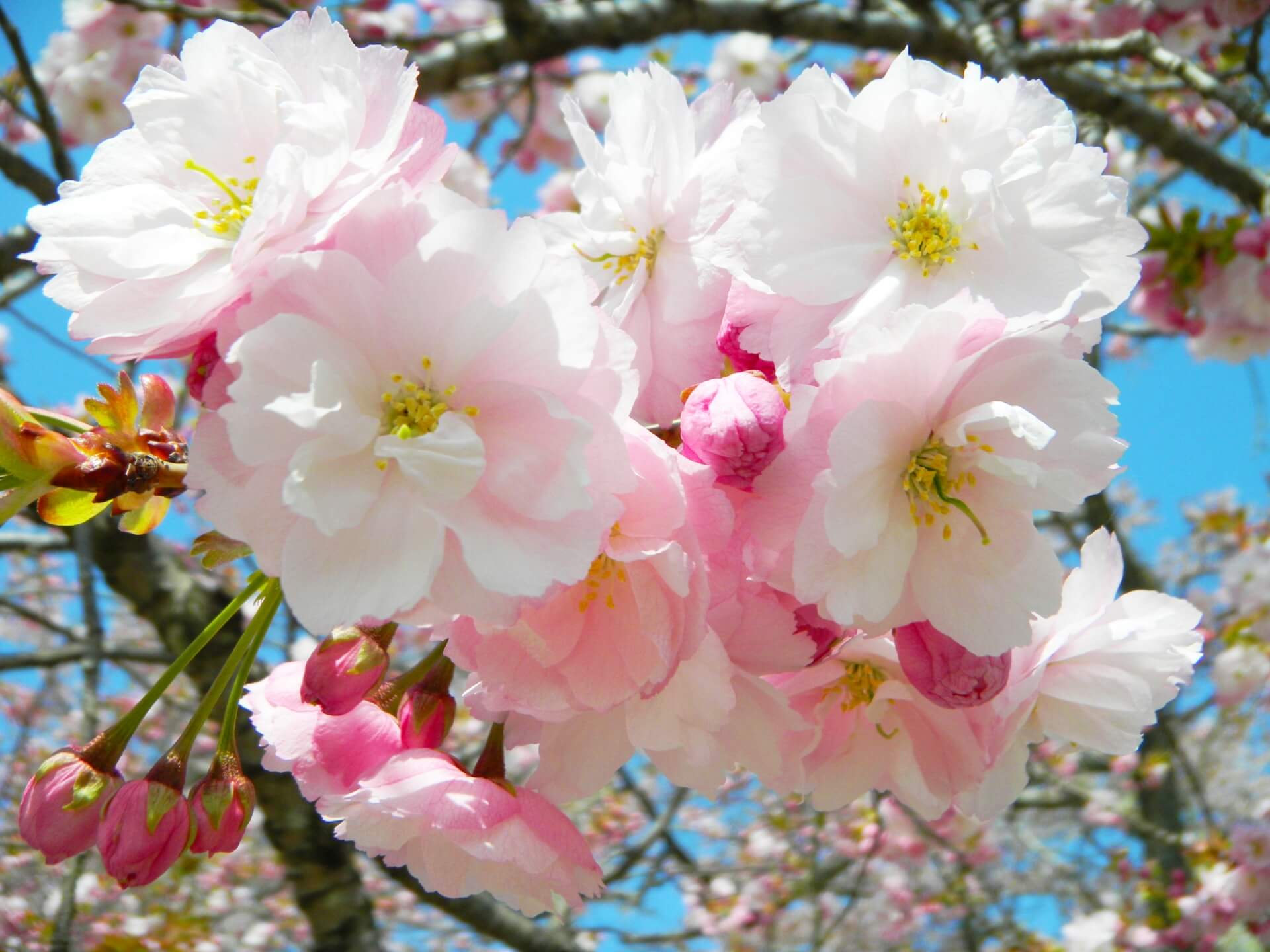
Translating as ‘double cherry blossom’ ‘yaezakura’ have anything from 10 to 50 petals per flower and occur in a wide variety of colours – from vibrant pink to deep red through to pure white. While individual petals are also fragile, the increased number in each flower gives yaezakura a more robust appearance and ability to stay on the tree longer.
'Shidarezakura' (Weeping Cherry Blossom)
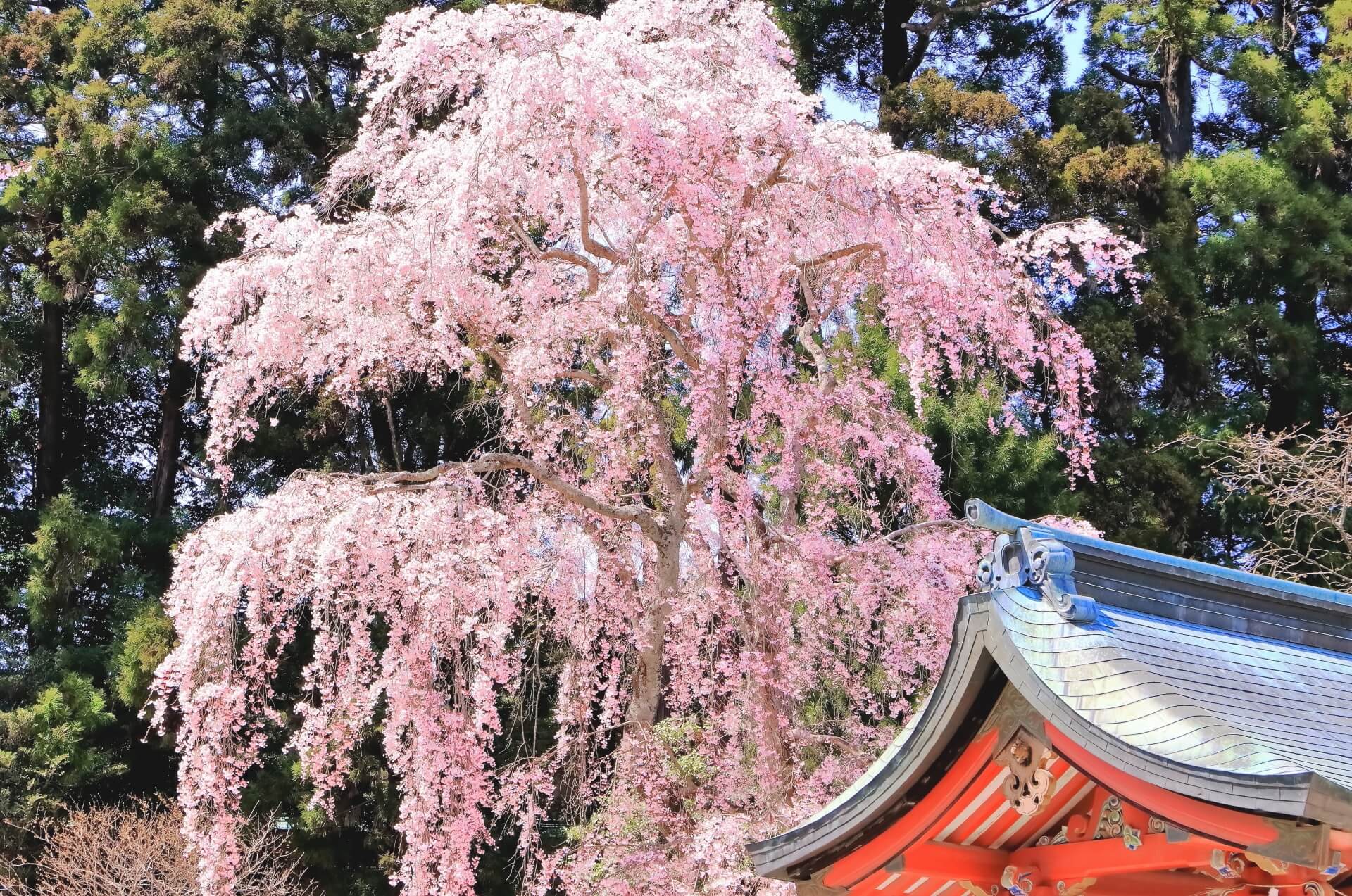
Named for their thin drooping branches that fall to the ground like a willow tree, ‘shidarezakura’ come in two varieties that bloom around one week apart. The trees are much-loved in Japan and often depicted or referenced in traditional art and poetry. Of the two types, one is related to the somei yoshino – producing 5-petaled flowers – while the other is related to the yaezakura – producing more robust flowers – with both varieties existing in a range of colours.
'Gyoikozakura' (Imperial Yellow Cherry Blossoms)
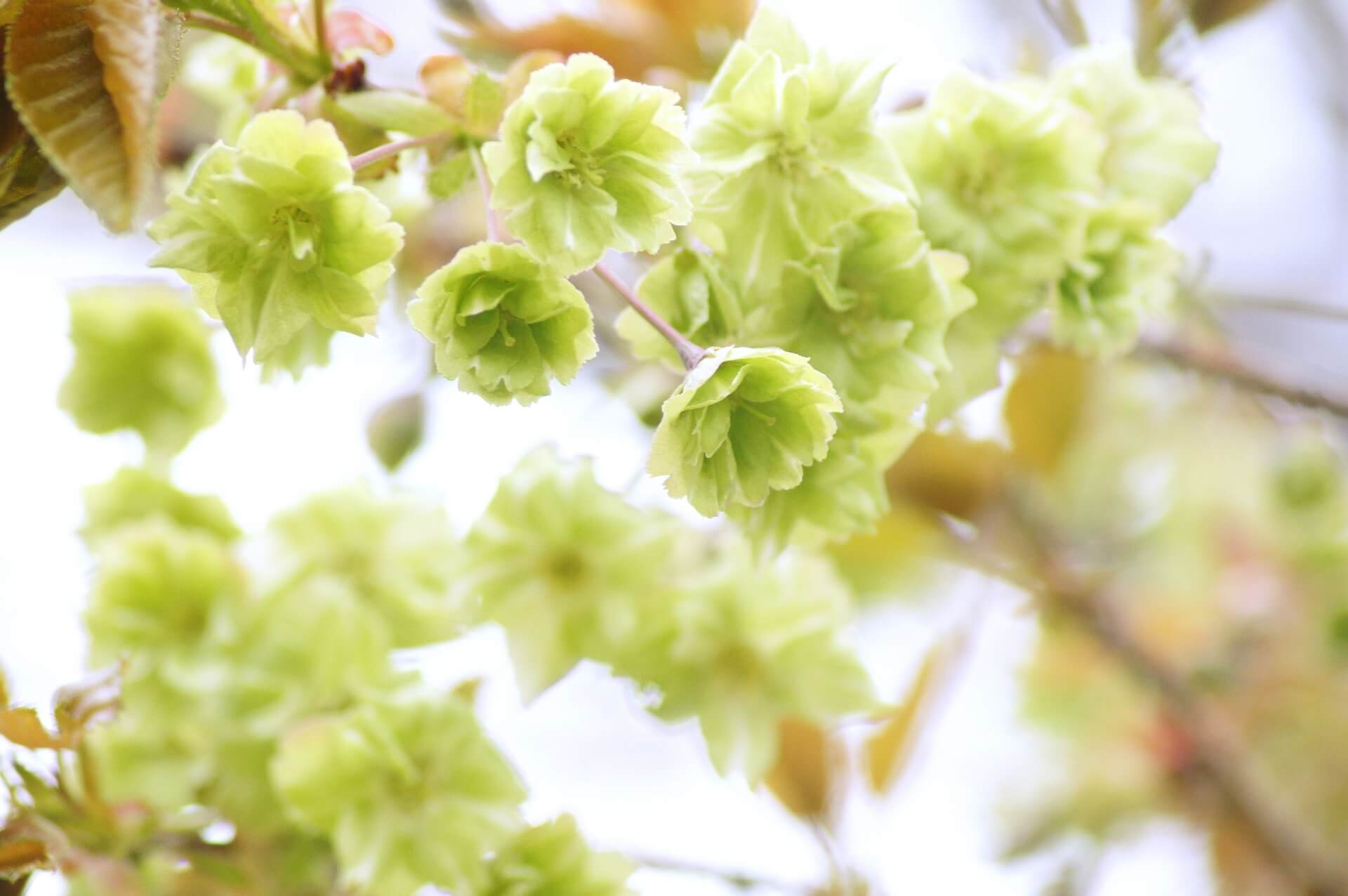
Many people will miss the uniquely beautiful sight of ‘gyoiko’ blossoms due to their large and uniquely coloured flowers that change as they bloom. Starting with yellow petals the flowers turn green as they mature. Even many Japanese are not familiar with this variety of cherry tree or may not realise they are a variety of sakura making them a rare treat to spot and photograph.
HOW THE BLOSSOMS BLOOM
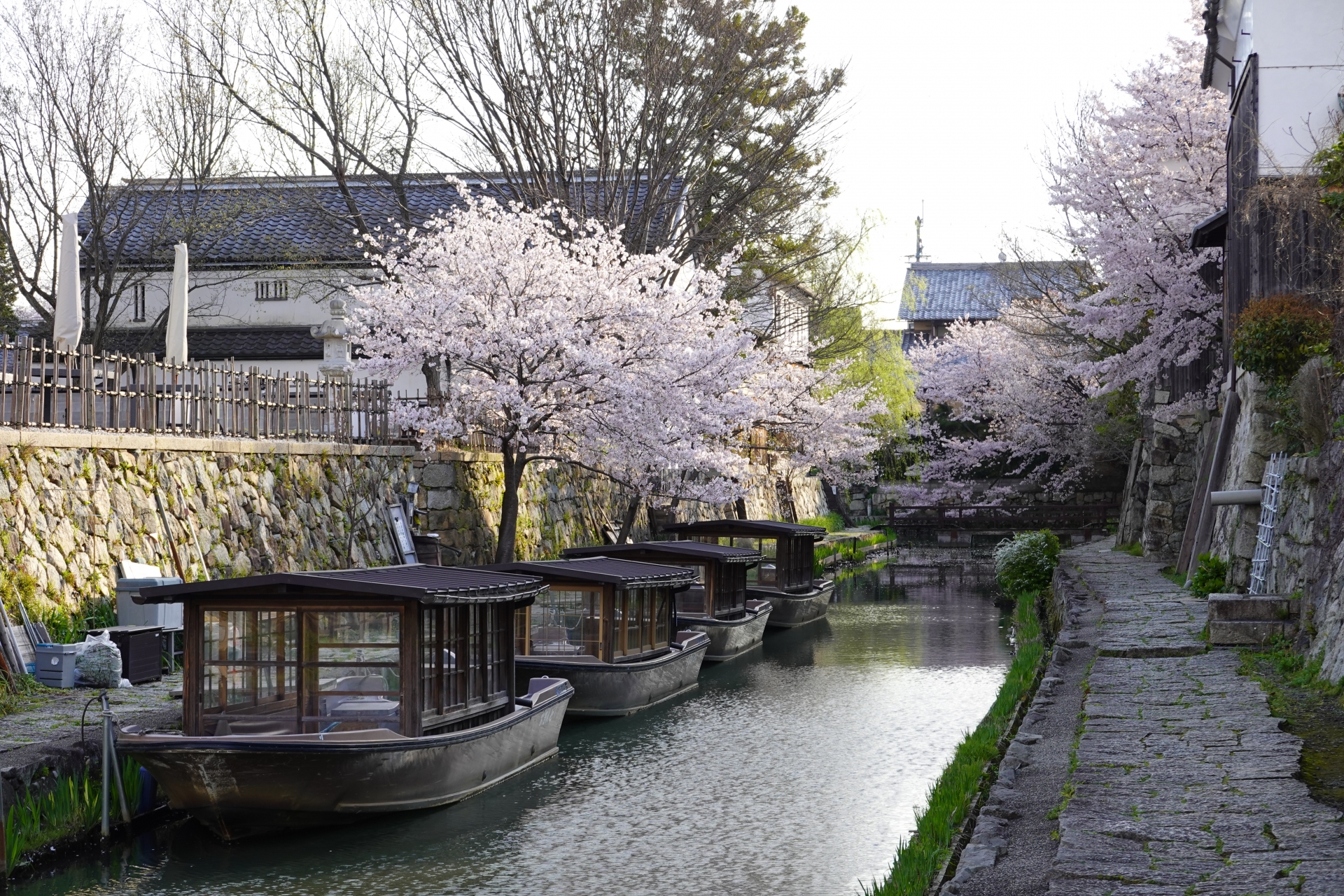
While the timing of the bloom will vary from location to location, and from year to year, the duration of the bloom is quite predictable. Once a tree begins to bud, full bloom – at which time at least 70% of the flowers will be open – will occur around one week later before the petals start to fall and the tree gradually greens. After two weeks the flowers will be gone but before they disappear, you can enjoy the following stages of ‘hanami’ (flower-viewing):
‘Kaika’ (first blossoms)
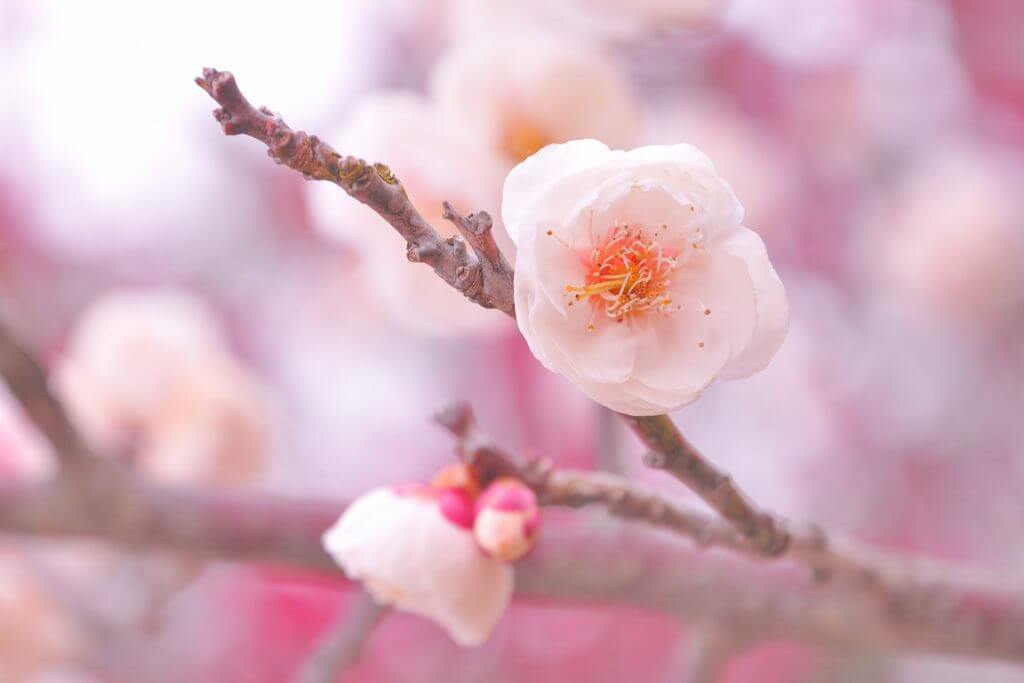
The timing of first bloom depends on the season and the location of the specific tree. Sensitive to the change in temperature, many factors influence when an individual tree starts to bud. Positioning in relation to buildings which radiate heat, direct sunshine and other elements determine when the first flowers will emerge.
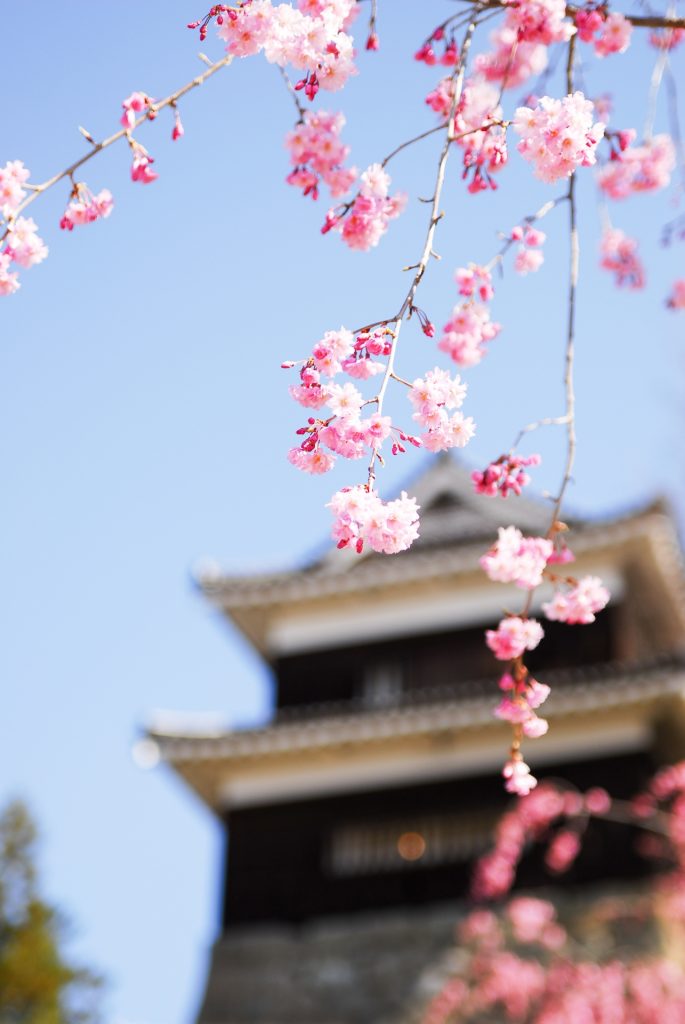
Known as ‘kaika’, the first week of bloom will see individual flowers opening to reveal their beautiful, fragile petals. Over the course of the week the tree will quickly come to its full glory as the majority of flowers open and the tree is transformed in colour and form.
‘Mankai’ (full bloom)
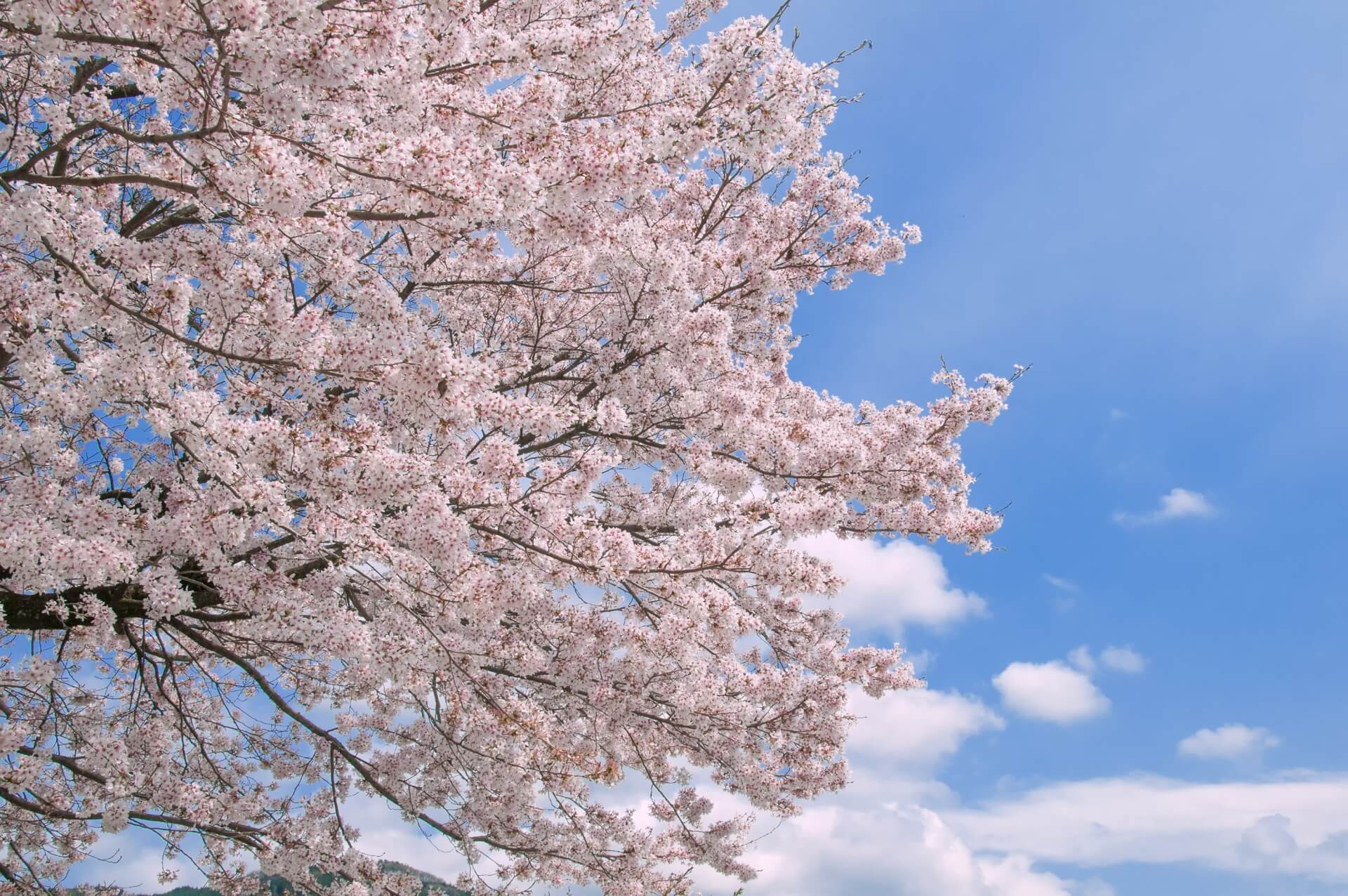
One week after kaika, trees will reach full bloom. Known as ‘mankai’, the sight of the blossom trees heavily flowered set against the bright blue sky of spring, is truly stunning. Large hanami events are timed for mankai, with parks and other popular destinations packed with couples, families and friends sitting on the ground to look up at the canopy of white and pink above.
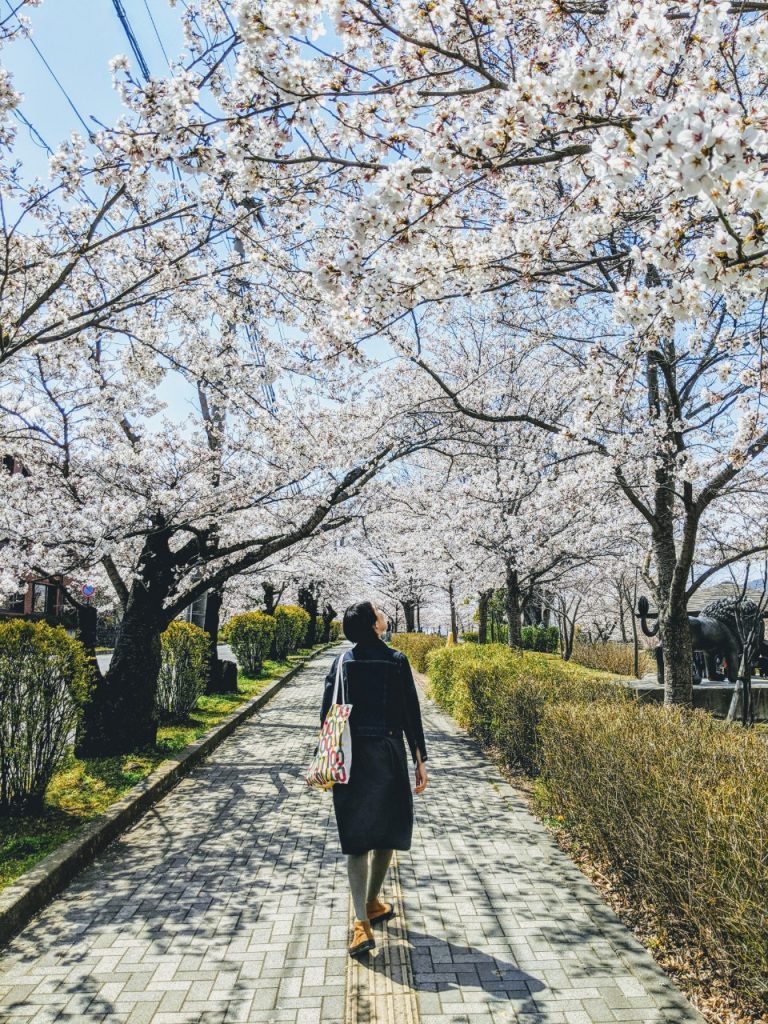
Enjoying the spectacular sight of mankai is a highlight for any visitor to Japan and one enjoyed as much at night as it can be during the day. Paper lanterns are often hung below the canopy of flowers, which at night light-up and cast the trees in a magical pink glow.
‘Sakurafubuki’ (cherry blossom blizzard)
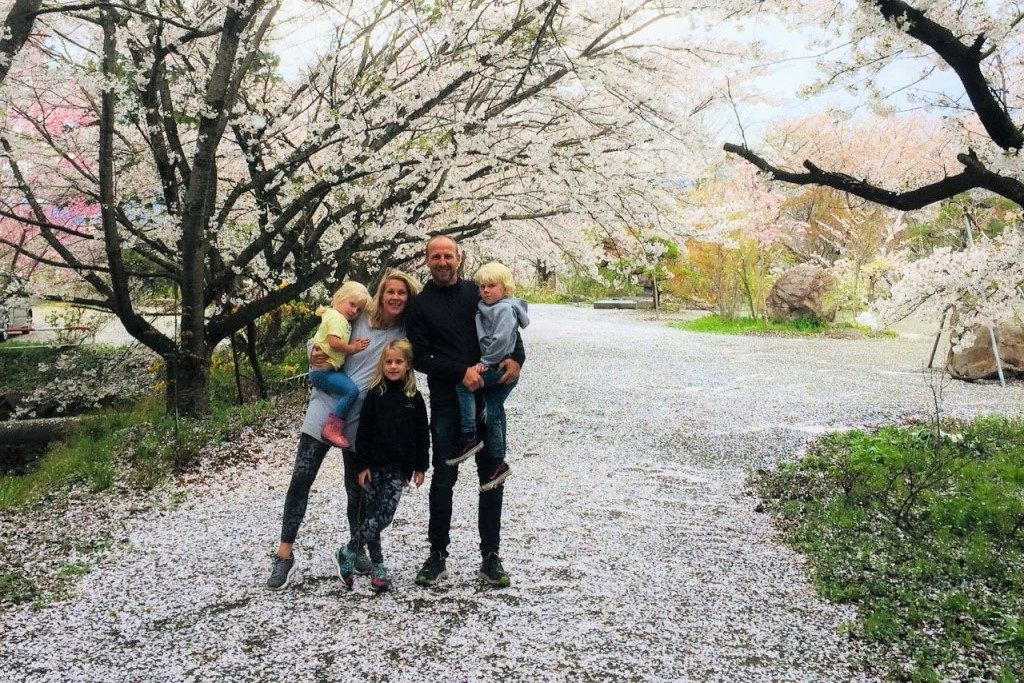
Also known as ‘hanafubuki’, flower blizzard begins in the second week of an individual trees bloom as the fragile blossoms begin to fall. Beginning slowly and gathering pace as time passes by, individual petals begin to drop and before long are showering those below in a poignant display which captures the fleeting nature and fragile beauty of the flowers.
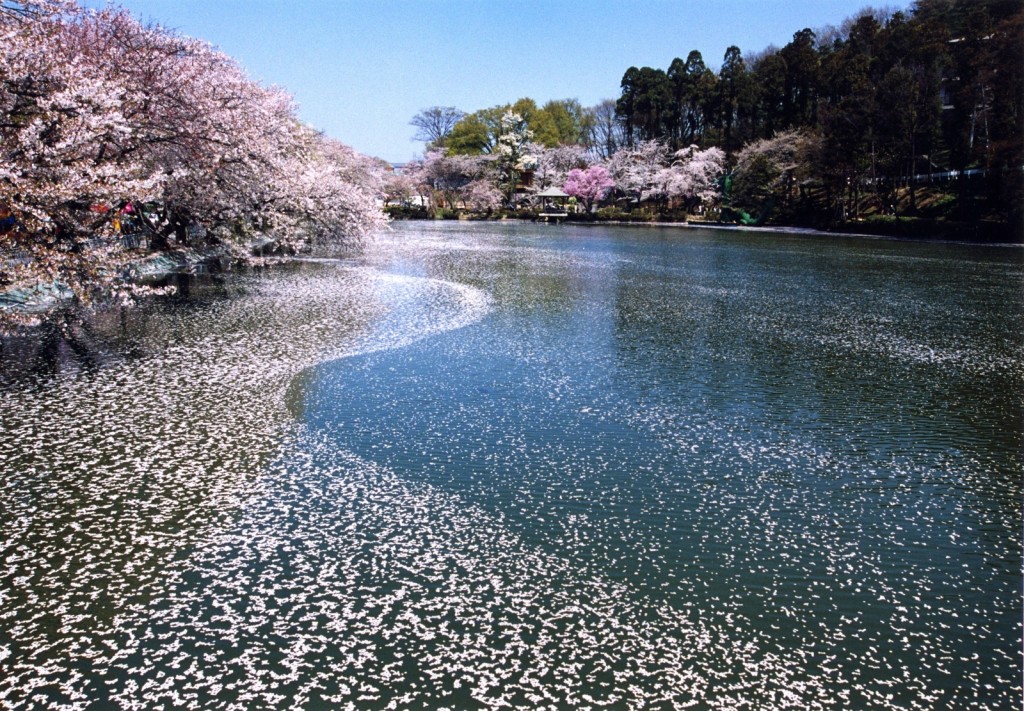
Sakurafubuki is at its most spectacular in areas of many trees, which will shed their petals as if in unison. As the petals fall to the ground, the trees green with the new growth of budding leaves. It won’t be long until the blossoms are completely gone and the trees are transformed in colour and form. But before that time, wandering beneath the trees to be showered by sakurafubuki is one of the highlights of Japan in spring.
TOURS AND CHARTERS TO VIEW THE BLOSSOMS
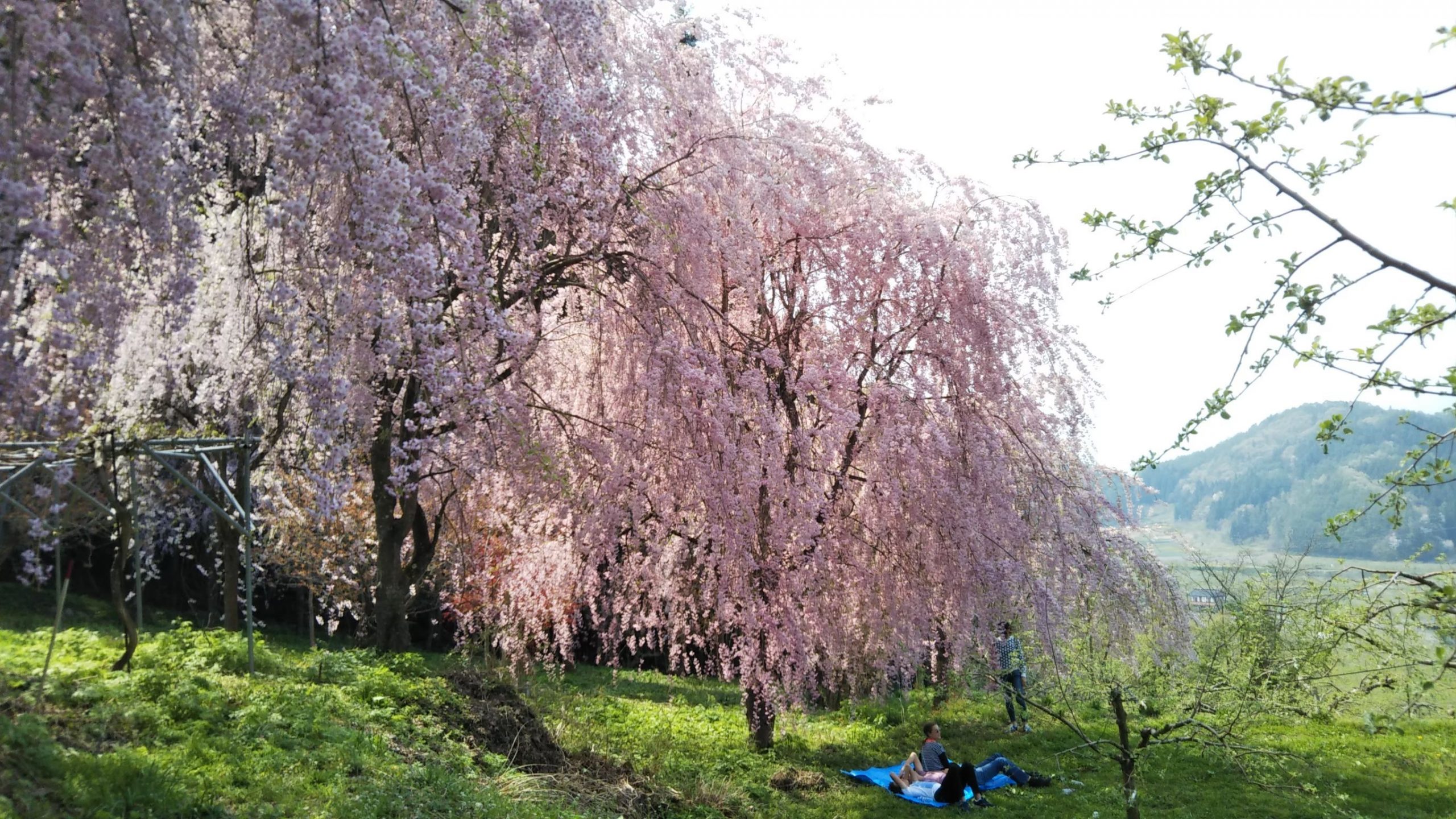
Cherry Blossoms can be very fickle - they do not bloom at the same time every year, nor at the same time in every region. Timing your trip can therefore be a little difficult without some insider knowledge about where the flowers are blooming for that specific day. Luckily, we are here to help - with group tours and charter services available to bring you to the blossoms.
Recommended
(Spring Only) 1-Day Tour: Snow Monkeys & Cherry Blossoms in Nagano
- Spots:
- NaganoSnow Monkey
- Pick-up:
- Nagano City
- Drop-off:
- Nagano City
Available only in Spring (of course!), this group tour combines a trip to the Snow Monkey Park with beautiful Cherry Blossoms, a great combo. Where you will go to see the blossoms is not set - instead, we use our local expertise to pick the best spot for each day that the tour runs and guarantee that you can see the best possible scenery. This is the safest and easiest way to enjoy a day out in nature without any hassle or stress.

If a guided tour is not what you are after, our private charter service may be more your style. With friendly, certifies drivers and clean vehicles, we will pick you up from your accommodation (or wherever you choose to be picked up from) and bring you to any great cherry blossom spot of your choice. If you need advice, just feel free to ask and we can put together an itinerary for you using our local knowledge and experience. Please click HERE for more information on pricing and availability.














